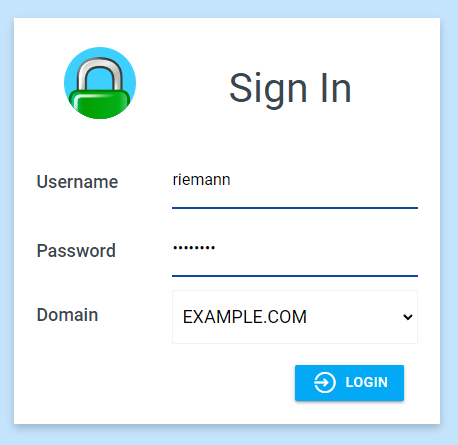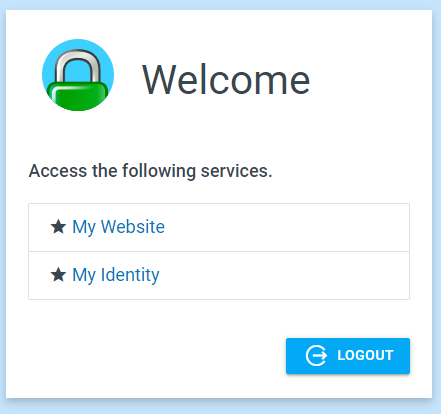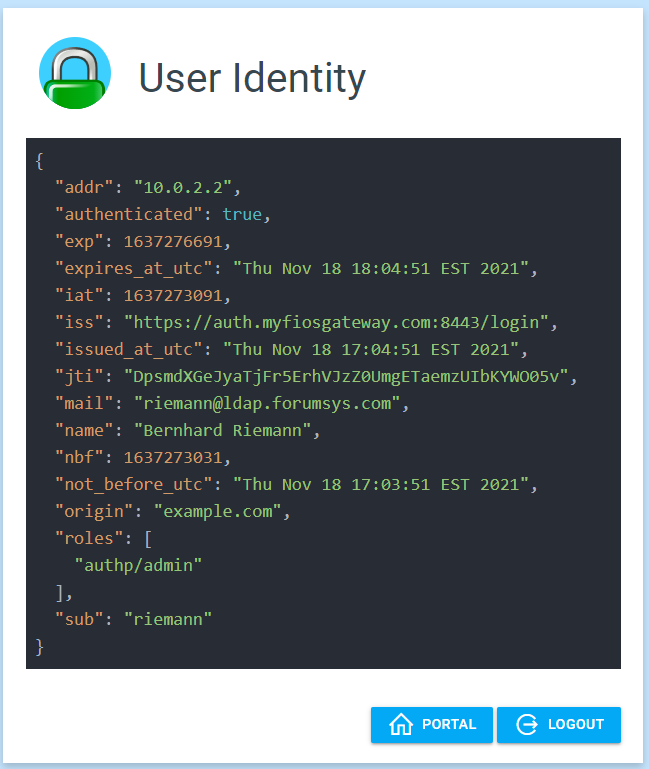LDAP Configuration
It is recommended reading the documentation for Local identity store, because it outlines important principles of operation of all identity stores.
Additionally, the LDAP identity store works in conjunction with Local identity store. As you will see later, the two can be used together by introducing a dropdown in UI interface to choose local versus LDAP domain authentication.
Configuration Examples
The reference configuration for the identity store is in the following files:
assets/conf/ldap/Caddyfile: Microsoft AD LDAP integrationassets/conf/ldap/posix/Caddyfile: LDAP integration with POSIX groupsassets/conf/ldap/glauth/Caddyfile: LDAP integration with GLAuth
The following Caddy endpoint at /auth authentications users
from contoso.com domain.
Microsoft AD Integration
There is a single LDAP server associated with the domain: ldaps://ldaps.contoso.com.
The plugin DOES NOT ignore certificate errors when connecting to the servers.
However, one may ignore the errors by appending ignore_cert_errors to the
ldap server address.
servers {
ldaps://ldaps.contoso.com ignore_cert_errors
}
As a better alternative to ignoring certificate errors, the plugin allows
adding trusted certificate authorities via trusted_authority Caddyfile directive:
servers {
ldaps://ldaps.contoso.com
}
trusted_authority /etc/gatekeeper/tls/trusted_authority/contoso_com_root1_ca_cert.pem
trusted_authority /etc/gatekeeper/tls/trusted_authority/contoso_com_root2_ca_cert.pem
trusted_authority /etc/gatekeeper/tls/trusted_authority/contoso_com_root3_ca_cert.pem
The following commands allow you connecting LDAPS server, e.g. ldaps.localhost.local:636 and
collecting certificates for the trusted_authority directive.
mkdir -p certs && cd certs
openssl s_client -showcerts -verify 5 -connect ldaps.localhost.local:636 < /dev/null | \
awk '/BEGIN/,/END/{ if(/BEGIN/){a++}; out="cert"a".crt"; print >out}' && \
for cert in *.crt; do \
newname=$(openssl x509 -noout -subject -in $cert | sed -n 's/^.*CN=\(.*\)$/\1/; s/[ ,.*]/_/g; s/__/_/g; s/^_//g;p').pem;
mv $cert $newname;
done
The LDAP attribute mapping to JWT fields is as follows. This is a typical Microsoft AD mapping.
| JWT Token Field | LDAP Attribute |
|---|---|
name | givenName |
surname | sn |
username | sAMAccountName |
member_of | memberOf |
email | mail |
The plugin uses authzsvc domain user to perform LDAP bind.
The base search DN is DC=CONTOSO,DC=COM.
The plugin accepts username (sAMAccountName) or email address (mail)
and uses the following search filter: (&(|(sAMAccountName=%s)(mail=%s))(objectclass=user)).
For example:
{
"Name": "sAMAccountName",
"Values": [
"jsmith"
]
},
{
"Name": "mail",
"Values": [
"jsmith@contoso.com"
]
}
Upon successful authentication, the plugin assign the following rules to a user, provided the user is a member of a group:
| JWT Role | LDAP Group Membership |
|---|---|
admin | CN=Admins,OU=Security,OU=Groups,DC=CONTOSO,DC=COM |
editor | CN=Editors,OU=Security,OU=Groups,DC=CONTOSO,DC=COM |
viewer | CN=Viewers,OU=Security,OU=Groups,DC=CONTOSO,DC=COM |
The security of the password could be improved by the following techniques:
- pass the password via environment variable
LDAP_USER_SECRET - store the password in a file and pass the file inside the
passwordfield withfile:prefix, e.g.file:/path/to/password.
This Caddyfile
secures Prometheus/Alertmanager services. Users may access using local and LDAP credentials.
POSIX Groups Integration
The configuration in assets/conf/ldap/posix/Caddyfile
is for the integration with Online LDAP Test Server.
The key differences of the configuration follow:
First, the posix_groups directive at the LDAP server level instructs the
plugin to make a secondary LDAP call to discover user memberships in groups.
The search similar to the command below:
ldapsearch -x -h ldap.forumsys.com -D "cn=read-only-admin,dc=example,dc=com" -w password -b "dc=example,dc=com" \
"(&(uniqueMember=uid=riemann,dc=example,dc=com)(objectClass=groupOfUniqueNames))"
Second, the search_group_filter directive allows the modification of the
default (&(uniqueMember=uid= + USER_DN + )(objectClass=groupOfUniqueNames))
group search string.
Third, there are a number of attributes that would require modification.
The user object follows:
# riemann, example.com
dn: uid=riemann,dc=example,dc=com
objectClass: inetOrgPerson
objectClass: organizationalPerson
objectClass: person
objectClass: top
cn: Bernhard Riemann
sn: Riemann
uid: riemann
mail: riemann@ldap.forumsys.com
The comments in the below snippet explain the changes.
attributes {
# The name us mapped to cn attribute, i.e. Bernhard Riemann
name cn
# Although surname is being kept in sn attribute, there is no
# attribute for given name. Thus, it is useless in isolation.
# Therefore, changeing surname value to non-existing attribute foo.
surname foo
# The username is mapped to uid attribute, i.e. riemann
username uid
# The member_of is not being used.
member_of uniqueMember
email mail
}
The screenshots from the login, portal, and whoami pages follow.


